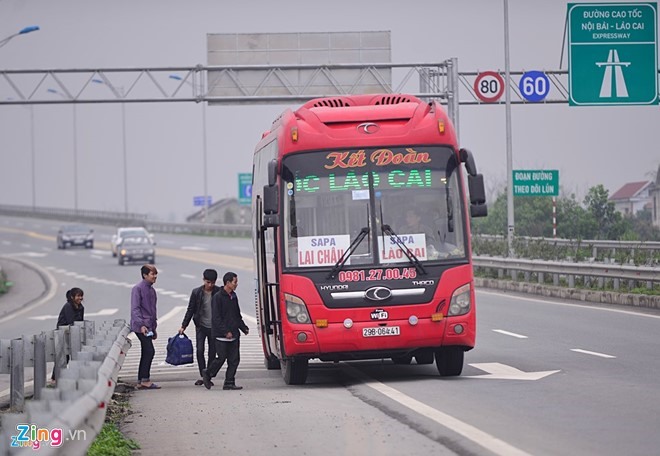 Society
Society

Surveillance cameras and speed monitoring devices installed along Nội Bài-Lào Cai Expressway will start recording violations on November 3, the transport police department has said.
 |
| Surveillance cameras and speed monitoring devices installed along Nội Bài-Lào Cai Expressway will start recording violations on November 3. — Photo news.zing.vn |
HÀ NỘI – Surveillance cameras and speed monitoring devices installed along Nội Bài-Lào Cai Expressway will start recording violations on November 3, the transport police department has said.
The recorded data will be sent to the traffic police department’s Information Centre, from where it will be sent to the laptops of traffic police officials on duty along the route.
Based on visual data and reports of traffic violations on the system, the traffic police can stop vehicles and ask drivers to pay penalty immediately, or send a notice to violators (also called passive fine). Violations can include illegal parking and driving in the wrong lane.
Under the pilot plan, 58 cameras have been installed on the Hà Nội-Phú Thọ section of Nội Bài-Lào Cai Expressway.
The traffic police personnel working on this route have undergone training on how to use the new monitoring equipment and how to settle violations.
Nguyễn Hữu Dánh, deputy director of transport police department, which is under the Ministry of Public Security (MoPC), said the monitoring system will prove to be invaluable.
“Penalties based on images captured by surveillance cameras will improve motorists’ awareness because of their accuracy,” Dánh told news.zing.vn. The MoPC went ahead with the project after it got government approval.
Similar measures put in place on routes such as Pháp Vân-Cầu Giẽ, Hà Nội-Vinh, HCM City-Trung Lương have proved to be very effective.
Based on the results of the pilot programme on Nội Bài-Lào Cai Expressway, the department will install monitoring systems on highways across the country, he said.
The 265-km expressway runs from Hà Nội’s Nội Bài through the provinces of Vĩnh Phúc, Phú Thọ, Yên Bái and Lào Cai. Since it became operational in September 2014, it has reduced travel time from Hà Nội to Lào Cai to 3.5 hours, and eased traffic density on national highways 2,2B, 32C and 70. The route is part of the infrastructure development project under China’s Kunming-Hà Nội-Hải Phòng Economic Corridor. — VNS